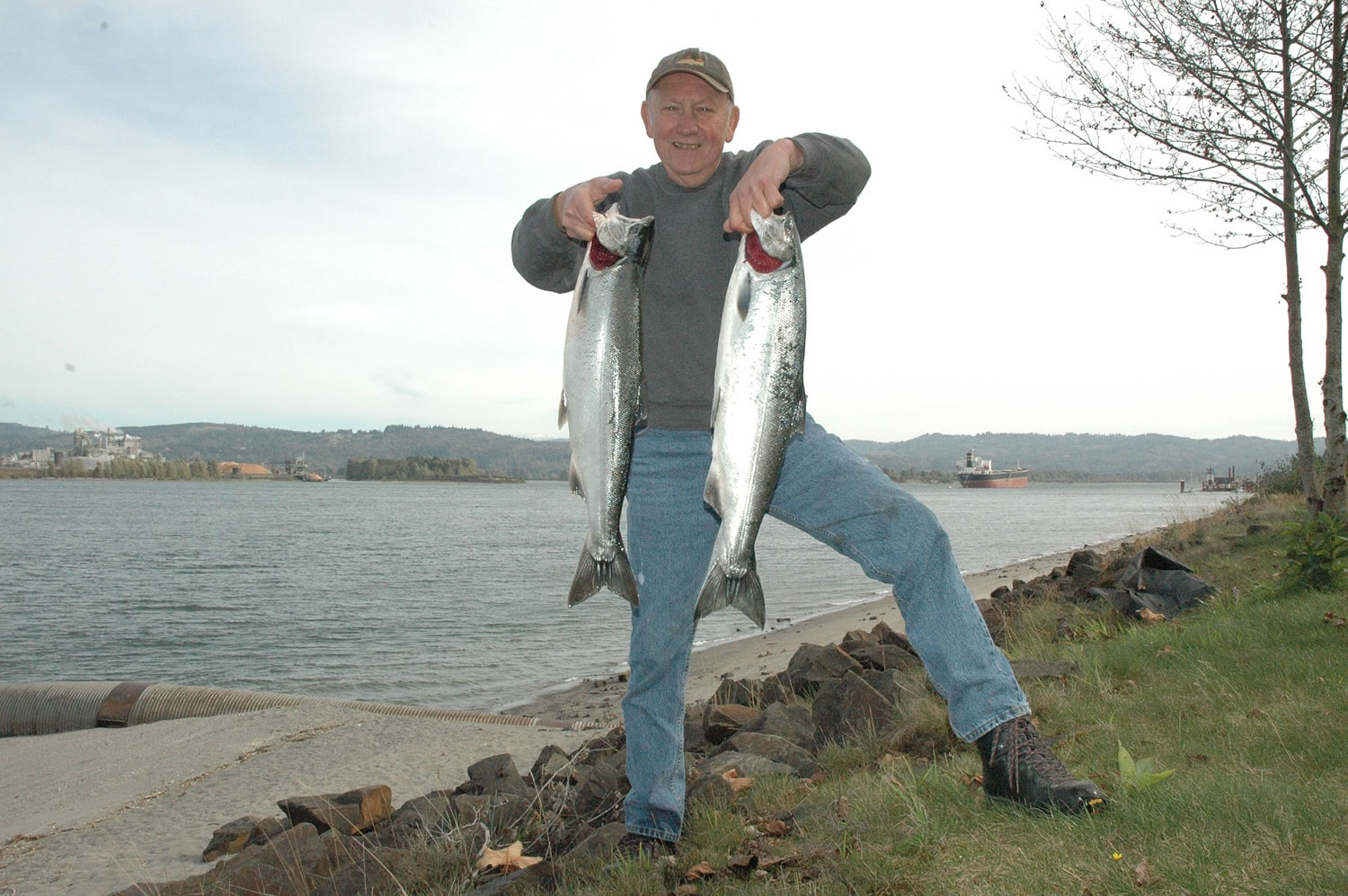Coho fishing has been so good in the lower Columbia River in 2014 that anglers — even earlier this week — were catching limits simply by casting spinners off Kalama Bar.
Trollers at the mouth of the Cowlitz River in late September and early October had exceptional success, and trollers using diving plugs downstream Camas did reasonably well, too.
A Columbia River coho run initially forecast to be about 638,000 will number more than 800,000 when all the tallying is complete.
So it’s not a big surprise that the lower Columbia sport catch in 2014 topped 8,000 coho, essentially doubling the old record of 4,027 set in 1986.
Coho do not bite particularly well upstream of the Columbia River estuary.
The new record-high catch of 8,048 still is a small number compared to the sport catch of 56,600 at Buoy 10, the name given to the lower 16 miles of the river been red Buoy No. 10 at the mouth and Tongue Point, upstream of Astoria.
This year’s coho have been quality fish, said Joe Hymer of the Washington Department of Fish and Wildlife.
“These are fairly large fish, some weighing up to 20 pounds apiece,” he said. “The trick is getting them to bite. The best time is when they are moving upriver, drawn by high water. Otherwise, it can be hard to get their attention.”
Hymer noted anglers off the Columbia north jetty did well.
“Some weeks at the north jetty, several hundred anglers per week averaged nearly 1.5 fish per rod, which is also extraordinary,” he said.
Commercial fishermen in the lower Columbia had a good coho year, too. They caught 74,000 in the main river, plus 168,000 in off-channel areas such as Youngs Bay at Astoria.
The Columbia River upstream of Bonneville Dam is the star performer this fall.
Adult coho counts at Bonneville were 262,831 through October, a record high since counting began in 1938. The old mark was 259,533 in 2001.
And here’s some more good news: The count of jack coho at Bonneville more than doubled the 2013 count and is the fourth highest since at least 1980.
“We’re seeing lots of coho jacks at Bonneville this year, which is good news for areas above the dam next season,” Hymer said.
The Yakima River sport season for coho has been extended through Nov. 16 due to a record return with more than 20,000 coho counted at Prosser Dam.
Idaho’s Clearwater River is emblematic of coho upstream of Bonneville Dam.
Coho from Idaho’s Clearwater system once fuel a tribal fishery by the Nez Perce, plus contributed to sport and commercial fisheries in the Columbia.
But coho were declared functionally extinct in 1985 after counts at Lower Granite Dam on the Snake River flat-lined at zero in the 1980s.
The Nez Perce used surplus lower Columbia coho eggs starting in 1995 to rear fish for the Clearwater. Through October, the adult coho count at Lower Granite Dam on the Snake River exceeded 17,000.
The first sport-fishing in decades was permitted in the Clearwater.
“In a year of great salmon returns this one stands out because it started from zero,” said Barry Thom, deputy regional administrator of NOAA Fisheries. “Few places in the world can say they have brought back a lost salmon run, but the determined work of the Nez Perce Tribe has done exactly that.”
Among the lower Columbia River tributaries, Washington’s Cowlitz and Lewis rivers are the two big producers of coho, followed to a much lesser extent by the Kalama River and Oregon’s Bonneville and Big Creek hatcheries.
Through October, preliminary hatchery returns numbered more than 39,000 to the Cowlitz Hatchery and 35,000 to the Lewis.
Lewis River coho are predominately early stock (August to early October), while Cowlitz coho are mostly late stock (late September into early November). The Kalama’s coho are a mix of both stocks.
While the coho jack counts are excellent at Bonneville Dam, preliminary jack returns are down by about half to Oregon’s lower Columbia facilities and 75 percent to Washington’s.
State, federal and tribal biologists soon will be issuing prospects for 2015.
The tentative schedule calls for a fall chinook initial outlook by Dec. 12; forecasts for spring chinook, summer chinook and sockeye by Dec. 15, and a fall chinook prediction by Feb. 12.




